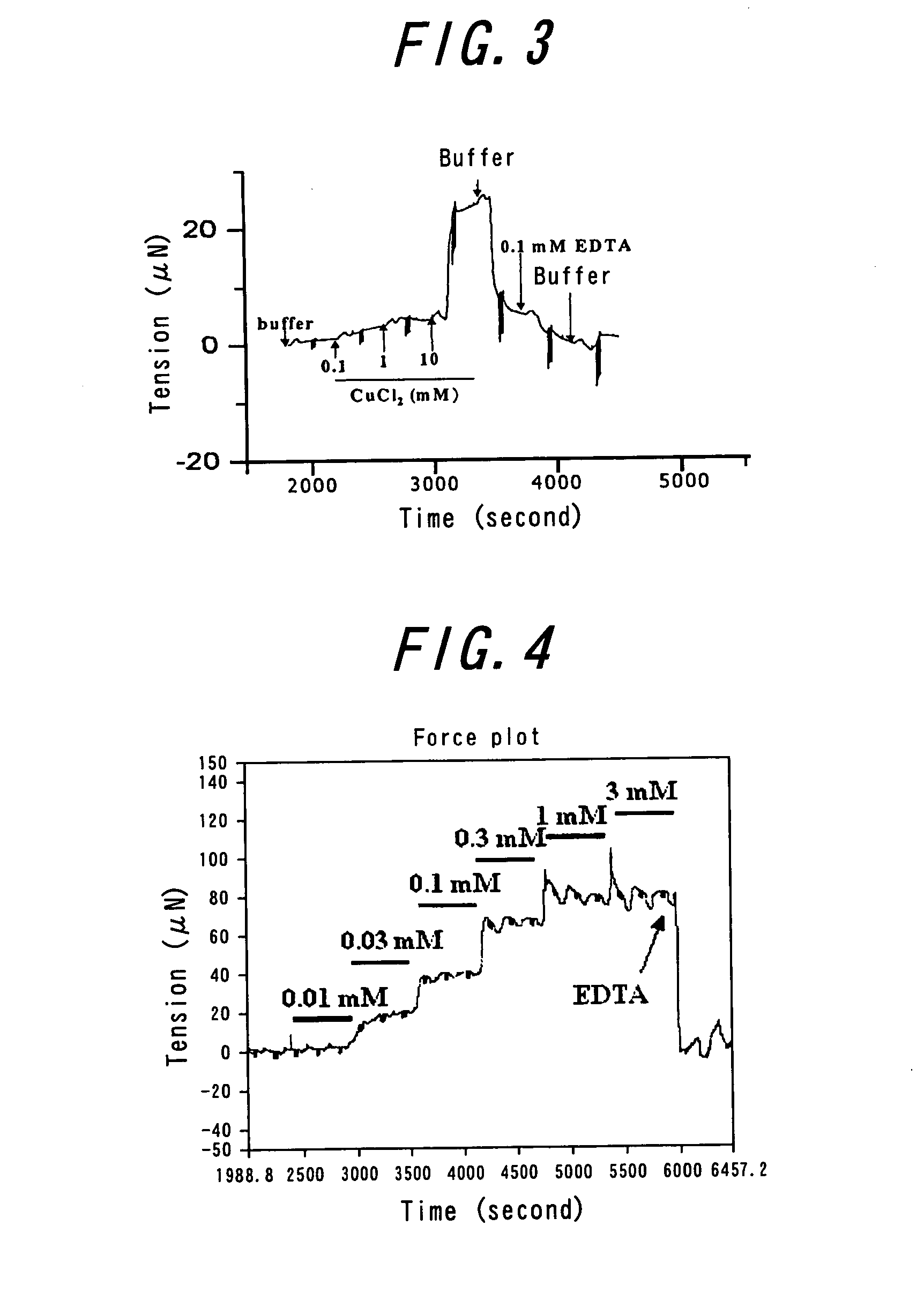Method of Detecting Conformational Change of an Amyloid Protein, a Method of Searching a Substance Having an Activity that Affects to Conformational Change of an Amyloid Protein, and Method of Searching a Therapeutic or Diagnostic Agent for Amyloid-Related Diseases
a technology of amyloid protein and conformational change, which is applied in the field of searching a substance having an activity that affects the conformational change of an amyloid protein, and the search of a therapeutic or diagnostic agent for amyloid-related diseases. it can solve the problems of intractable amyloid-related disorders, inability to measure the aggregation process in real time, and inability to detect amyloid-related disorders in a short period of time. , to
- Summary
- Abstract
- Description
- Claims
- Application Information
AI Technical Summary
Benefits of technology
Problems solved by technology
Method used
Image
Examples
example 1
Effect of ZnCl2 on the Changes in Tension and Elasticity of Amyloid β
[0037] Amyloid β (1-42) (Bachem AG, Budendorf, Switzerland) was dissolved in 0.1% ammonia water at the concentration of 1 mg / mL. This solution was sprayed under dry air using an electrospry device described in WO 2002-511792 or an immobilzing device described in Japanese Patent Publication No. 2003-136005. The solution was permeated through a mask with holes of 400 μm in length and 800 μm in width, and then a film having 1 μm thickness was prepared on 1.2% polyvinyl pyrrolidone, using an electrospray method (the EDS method). Then protein was cross-linked by glutaraldehyde.
[0038] The resulting film was placed on an apparatus having a mechanochemical sensor which was described in WO 2002-503332 or U.S. Patent Publication No. 6033913, and it was immersed into 10 mM Hepes pH7.4 buffer solution (hereinafter referred to as “the buffer solution”) containing 0.15 M NaCl. The buffer solution was passed through the film exi...
example 2
Effect of CuCl2 on the Changes in Tension and Elasticity of Amyloid β
[0041] An amyloid β (1-42) membrane was prepared and placed on a detecting apparatus, as described in EXAMPLE 1. The changes in tension and elasticity of the membrane, by CuCl2 dissolved in the buffer solution, were examined (FIG. 3). As same as EXAMPLE 1, concentration-dependent change in tension and elasticity was also recognized in the case of CuCl2. The tension was restored by EDTA almost to the state prior to addition of CuCl2. It has been reported that Cu2+, as well as Zn2+, facilitates aggregation of amyloid β. Such knowledge confirms that the phenomenon detected in the present invention is aggregation of amyloid β.
example 3
Effect of ZnCl2 on the Changes in Tension and Elasticity of α-synuclein
[0042] A α-synuclein (BIOMOL International LP, PA, USA) film was prepared and placed on a detecting apparatus, as described in EXAMPLE 1. The changes in tension and elasticity of the film, by ZnCl2 dissolved in the buffer solution, were examined (FIG. 4). As same as EXAMPLE 1, ZnCl2 concentration-dependent change in tension and elasticity was also recognized in the case of α-synuclein. The tension was restored by EDTA almost to the state prior to addition of ZnCl2.
PUM
 Login to View More
Login to View More Abstract
Description
Claims
Application Information
 Login to View More
Login to View More - R&D
- Intellectual Property
- Life Sciences
- Materials
- Tech Scout
- Unparalleled Data Quality
- Higher Quality Content
- 60% Fewer Hallucinations
Browse by: Latest US Patents, China's latest patents, Technical Efficacy Thesaurus, Application Domain, Technology Topic, Popular Technical Reports.
© 2025 PatSnap. All rights reserved.Legal|Privacy policy|Modern Slavery Act Transparency Statement|Sitemap|About US| Contact US: help@patsnap.com



